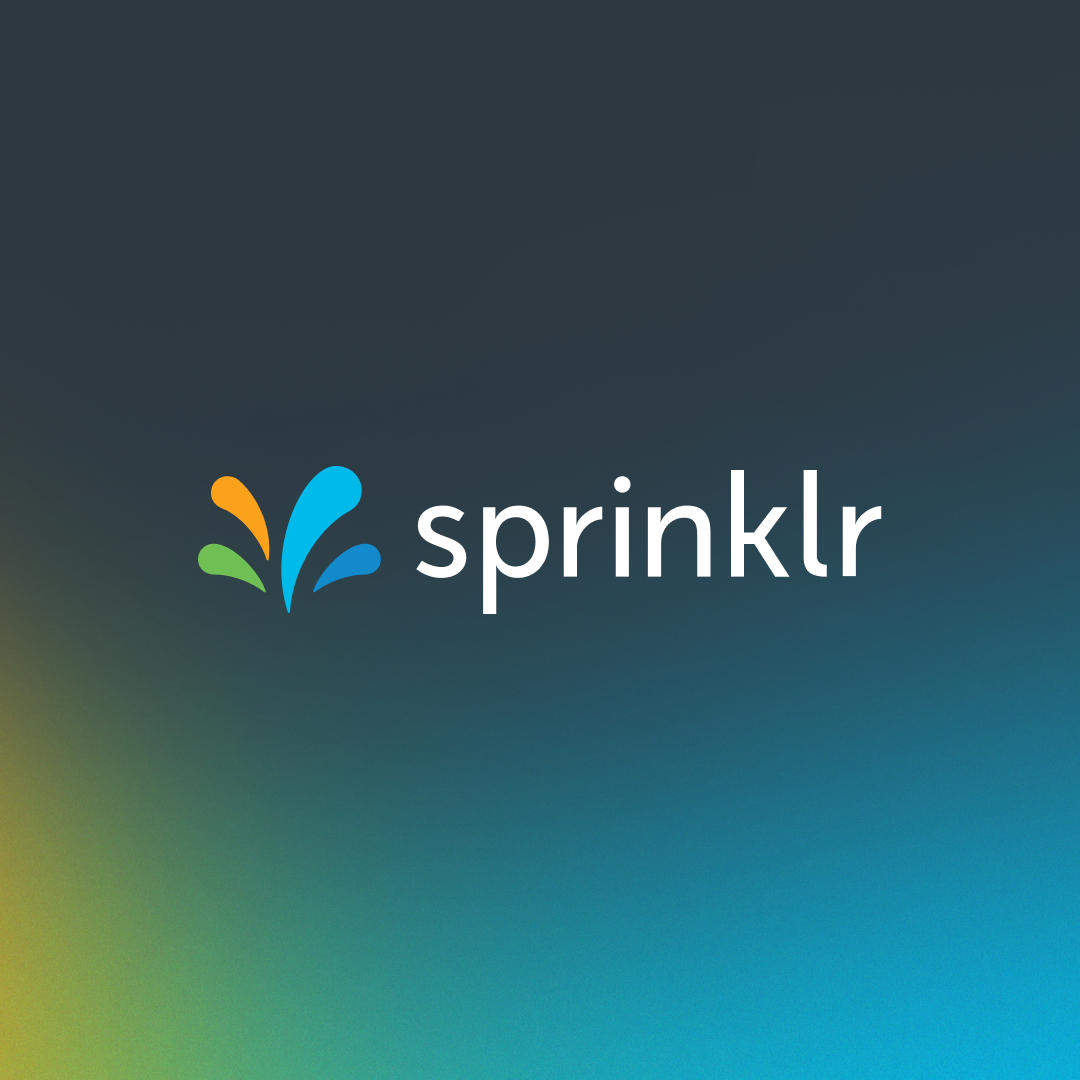The next generation of CCaaS is here
Digital-first customer service, enterprise-scale voice support. Redefine customer service with an AI-powered platform that unifies voice, digital and social channels. Power channel-less interactions and seamless resolution no matter the channel of contact.

Contact Center Dashboard: Types, Benefits & Trends in 2024
Upon realizing the paramount role of contact center operations in delivering exceptional customer service, irrespective of your business's size, your pursuit inevitably leads to a contact center dashboard.
The contact center dashboards provide a condensed, real-time view of successes and areas needing improvement within your contact center. They come in various types, each tailored to specific metrics and purposes.
In this blog, explore the industry definition of a contact center dashboard, delve into its benefits, examine the key metrics it covers and discover best practices.
- What is a contact center dashboard?
- Benefits of a contact center dashboard
- Different types of contact center dashboards
- Top contact center dashboard trends to watch out for in 2024
- Tips for reporting on contact center dashboards
- Build intuitive and interactive contact center dashboards with Sprinklr Service
What is a contact center dashboard?
A contact center dashboard is a visual reporting tool providing a real-time, consolidated view of essential contact center metrics and key performance indicators (KPIs). Its dynamic and centralized interface aggregates data from various contact center channels, presenting a holistic view of customer interactions, agent performance and operational trends.
Contact center dashboards present data points through various visual elements like bar charts, line charts, pie charts, stacked bar charts, heatmaps, gauges, scatter plots and funnel charts. These elements enable C-suite executives and managers to make informed decisions swiftly, driving improvements in customer satisfaction and operational excellence.
Benefits of a contact center dashboard
There is an age-old saying – what gets measured gets managed. Contact center dashboards help measure performance and magnify underlying concerns, aiding contact center leaders in managing contact center operations. Here are some key benefits -
1. Real-time decision-making
Since contact center dashboards offer real-time insights, they empower you to respond promptly to peak periods, optimizing workforce management and improving overall responsiveness.
2. Enhanced visibility
Contact center dashboards provide a comprehensive and scannable view of critical contact center KPIs, offering executives and managers unparalleled visibility into contact center operations and agent performance. Additionally, importing data from contact center CRM systems provides a real-time view of customer interactions and the customer journey.
3. Improved customer experience
Contact center dashboards enable you to monitor customer feedback and analyze sentiment in real time. Consequently, you can swiftly identify pain points, develop customer empathy and implement changes on the fly to enhance the overall customer experience.
4. Optimized agent performance
Contact center dashboards allow for granular monitoring of agent performance metrics, enabling targeted coaching, training and contact center workflow adjustments to enhance efficiency and customer interactions.
5. Strategic planning
Historical and trend data presented in dashboards facilitate strategic planning. You can identify patterns, forecast future demands and deliver proactive customer service at scale.
6. Resource allocation efficiency
Insights into agent utilization and workload distribution enable more efficient allocation of human and technological resources, ensuring that the right resources are deployed at the right time.
7. Proactive issue resolution
Early detection of emerging issues through dashboards allows for proactive resolution, minimizing the impact on contact center operations and customer satisfaction.
A contact center dashboard displays the reports, but it is easy to confuse them with analytics. After all, both use imagery like graphs, bars and charts to show data. However, contact center reporting and contact center analytics are not the same.
Here’s how they differ:
Difference between contact center reporting and analytics
Aspect | Contact center reporting | Contact center analytics |
Focus | Primarily retrospective | More forward-looking, aims to uncover trends and patterns |
Nature | Provides a structured set of predefined metrics | Involves complex data analysis, often using machine learning and predictive modeling |
Purpose | Tracks operational efficiency, monitors agent performance, assesses SLA adherence | Informs strategic decision-making, forecasts future trends, identifies opportunities for improvement |
Example | Details number of calls handled by each agent, average hold times | Predicts peak call times, forecasts customer satisfaction trends, identifies factors contributing to service issues |
Integration | Reporting often serves as foundational data for analytics | Analytics build upon insights gained from reports |
Different types of contact center dashboards
In the contact center operation landscape, a variety of contact center dashboards exist, each meticulously designed to gauge specific metrics and serve distinct purposes. Let’s explore these one by one.
1. Operational dashboards
Focus: Operational dashboards provide real-time insights into daily contact center activities.
Key metrics covered: Call volume, average hold time, call abandonment rate, average speed of answer, escalation, service level adherence, current queue status and more.
Purpose: These dashboards facilitate on-the-fly decision-making, ensuring efficient management of day-to-day operations.
2. Agent performance dashboards
Focus: Performance dashboards focus on key performance indicators (KPIs) for agents and teams.
Key metrics covered: Average handle time (AHT), first contact resolution (FCR), customer satisfaction (CSAT), quality score, call wrap-up time, transfer rate, knowledge base utilization and more are covered in such dashboards.
Purpose: These dashboards empower supervisors and managers to analyze performance trends and provide targeted coaching for continuous improvement.
3. Strategic dashboards
Focus: Strategic contact center dashboards offer insights into long-term goals and trends within the contact center.
Key metrics covered: CSAT score, net promoter score (NPS), workforce utilization, agent productivity, customer retention rate, forecast accuracy and more.
Purpose: These contact center dashboards support strategic decision-making and planning. They provide a holistic view of the contact center's trajectory for informed strategic initiatives.
4. Customer experience (CX) dashboards
Focus: CX dashboards focus on customer satisfaction and overall customer experience metrics.
Key metrics covered: Response time, resolution time, CSAT score, customer effort score (CES), and net promoter score are typically covered in the customer experience dashboard. Customer feedback and sentiment also get prominently highlighted in such dashboards.
Purpose: These dashboards are invaluable for understanding the customer's perspective, identifying pain points and making data-driven decisions to enhance the overall customer experience.
5. Agent productivity dashboards
Focus: Agent productivity dashboards concentrate on efficiency and workload metrics.
Key metrics covered: Occupancy rate, script adherence and task completion are presented to help optimize agent workload and allocate resources effectively.
Purpose: These dashboards play a crucial role in ensuring that agents perform efficiently and meet their targets.
Read More: How to Leverage AI to Improve Agent Productivity in Contact Centers
6. Financial dashboards
Focus: Financial dashboards provide insights into the financial performance of the contact center.
Key metrics covered: Operational costs, revenue generated through interactions, and cost per interaction.
Purpose: These dashboards are essential for assessing the financial impact of contact center operations and optimizing processes to improve contact center ROI.
7. Multichannel dashboards
Focus: Multichannel dashboards focus on performance metrics across various communication channels.
Key channels covered: Voice, email, live chat and social media
Purpose: These dashboards enable contact center managers to monitor and optimize performance across diverse channels, ensuring a seamless and consistent customer experience.
Also Read: What Are Multichannel Contact Centers
8. Self-service dashboards
Focus: Self-service dashboards concentrate on metrics related to customer utilization of self-service options.
Key channels covered: Self-service utilization rate, resolution rates, user completion rate, self-service containment rate and more.
Purpose: These dashboards help evaluate the effectiveness of customer self-service options, identify areas for improvement and enhance the overall customer experience.
Learn the Basics: AI Self-Service: A Definitive Guide for 2023-24
9. Quality and compliance dashboards
Focus: Quality and compliance dashboards focus on adherence to regulatory and internal compliance standards.
Key metrics covered: They include metrics related to internal policies and compliance, such as SLA, quality score, error rates in compliance documentation, documentation accuracy, audit results and more.
Purpose: These dashboards ensure that contact center operations align with legal and organizational requirements, minimizing non-compliance risk.
Good to Know: Sprinklr AI+ automates quality management, providing actionable insights and recommended actions. You can tailor AI scoring parameters for effective agent training, ensuring consistent interaction quality. Elevate decision-making with surfaced insights, root causes and suggested actions. Explore more about Sprinklr AI+.

Editor’s Pick: Contact Center Compliance: Importance, Strategy & Checklist
10. Campaign dashboards
Focus: Campaign dashboards concentrate on specific marketing or outreach campaign metrics.
Key metrics covered: Customer responses, click-through rates, conversion rates, cost per conversion and more.
Purpose: These dashboards play a key role in evaluating the success of targeted campaigns, refining strategies and optimizing marketing initiatives for better outcomes.
Top contact center dashboard trends to watch out for in 2024
As customer interactions become more diverse and complex, managers must stay abreast of the latest trends to ensure that their contact center dashboards remain effective and aligned with evolving business goals. Here are some of the latest trends to influence the evolution of contact center dashboards in recent years.
Unified view
Contact center dashboards provide a unified view of data from various sources, such as call logs, ticketing systems and customer feedback. This integration gives you a holistic picture of your contact center's performance, enhancing decision-making and understanding.
Do you know: Unifying multiple channels on a single screen reduces average handle time by up to 30%. The contemporary agent desktop offers complete customization, empowering agents with real-time assistance through pertinent information while presenting a comprehensive history of customer interactions across various channels. Discover the advantages of a unified agent console.
Automation and quick action
Integrating contact center AI and automation into contact center dashboards is a growing trend. Contact center dashboards showcase AI-driven analytics and predictions, helping contact centers enhance operational efficiency. For instance, agents can create shortcut buttons for frequently escalated issues, reducing the time spent on manual steps.
Bonus Read: Maximizing Agent Efficiency: How Automation Can Benefit Contact Centers
Logical presentation of data and metrics
Advanced contact center dashboards group related elements such as agent performance, job satisfaction, training needs and more, presenting them in a logical sequence. This aids supervisors in getting a quick yet comprehensive overview of each agent and their growth.
Data drill-down capabilities
Contact center dashboards often offer the ability to drill down into specific datasets. Users can drill down to see the resolution times for individual agents or specific ticket types, providing deeper insights and supporting more informed decision-making.
Discussing the data drill-down capabilities, contemporary AI-powered analytics and reporting software can now comprehensively trace the end-to-end customer journey. This entails real-time monitoring of agent activities and gaining actionable insights into business operations at various levels.
Customization and personalization
Modern dashboards are designed to be customizable, allowing you to tailor the interface to your unique needs. For instance, agents can choose to display customer information alongside incoming inquiries, providing a comprehensive view of the customer's history and preferences.
Real-time widgets
Today, the contact center dashboard offers real-time widgets that display real-time metrics, such as the number of incoming calls, average call duration and the current email backlog. Contact center agents can choose the most relevant metrics to their roles and arrange them for quick visibility. Similarly, supervisors can have a consolidated view of metrics related to team performance, allowing them to make informed decisions on resource allocation.
Cloud compatibility
Adopting cloud compatibility is gaining momentum as contact centers progressively shift towards cloud-based solutions, enticed by the inherent advantages of flexibility, scalability and simplified management. This evolution is evident in the tailored design of contact center dashboards for cloud environments.
The streamlined implementation of updates and enhancements centrally eliminates the need for manual installations or disruptions to on-premise systems. This results in a more agile and responsive cloud contact center environment, facilitating the rapid deployment of the latest features and improvements without causing downtime
Deep Dive: On-premise vs. Cloud Contact Center: Which One Is Better?
Tips for reporting on contact center dashboards
✅ Define clear objectives
Clearly define the objectives of your reports. Whether assessing agent performance, monitoring service levels or tracking customer satisfaction, having specific goals ensures that your reports provide actionable insights.
📊 Tailor reports to audience
Executives may need high-level insights, while supervisors might require more granular details. Tailoring reports ensures that each stakeholder receives relevant and valuable information.
💡Use visualizations wisely
Leverage visualizations such as charts and graphs to make data more digestible. Choose visuals that best represent the data and trends, making it easier for users to grasp key information quickly.
📈 Provide historical context
Historical data is crucial in providing context and identifying trends. Comparing current performance with past metrics helps understand improvements or areas needing attention.
🔎 Highlight key performance indicators (KPIs)
Prioritize and highlight key performance indicators (KPIs) that directly align with business goals. This helps focus attention on critical metrics and ensures everyone is on the same page regarding performance benchmarks. Read how to get started with benchmarking.
💻 Interactive reporting options
Consider implementing interactive reporting options that allow users to drill down into specific data sets or adjust parameters. Interactive features enhance customer engagement and empower users to explore data according to their needs.
🔄 Regularly review and update reports
Periodically review the effectiveness of your reports and update them as needed. As business goals evolve, reporting requirements may change. Regular reviews ensure that reports remain relevant and impactful.
Build intuitive and interactive contact center dashboards with Sprinklr Service
As we navigate the intricate landscape of contact center management, it's evident that the challenges are as diverse as the interactions they handle. From optimizing agent performance to ensuring seamless customer experiences, a comprehensive solution is paramount.
Effortlessly unifying diverse data sources, Sprinklr Service offers a holistic view of operations, empowering you with the insights needed for swift and informed actions. Incorporating automation and AI-driven analytics streamlines processes, fostering operational efficiency and enabling quick responses to evolving challenges.
For more information, take a 30-day free trial and explore Sprinklr Service at your own pace.

Frequently Asked Questions
A real-time dashboard in a contact center is a dynamic interface displaying live data on key metrics, providing instant insights into ongoing operations, agent performance, and customer interactions.
Contact center dashboards should be reviewed regularly, ideally on a daily or weekly basis.
Absolutely, contact center dashboards are highly customizable, allowing you to tailor the interface to your unique requirements. This flexibility ensures that key metrics and insights align seamlessly with your specific business goals and operational preferences.


